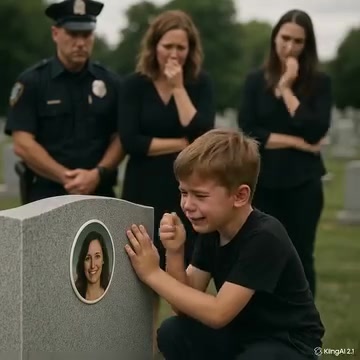In early May, visitors to the town cemetery began to notice a young boy—no more than ten—who appeared every day without fail. He would go to the same grave, sit quietly beside the headstone, and then, with a trembling voice, cry out to the sky:
“She’s not here! She’s still alive!”
People pitied him. They assumed he was simply heartbroken, refusing to accept his mother’s passing. Surely, they thought, with time he would come to terms with her death.
But days turned into weeks. Rain or shine, the boy returned. Always the same grave. Always the same crie
But days turned into weeks. Rain or shine, the boy returned. Always the same grave. Always the same cries.
The cemetery’s groundskeeper, growing uneasy with the boy’s daily anguish, finally decided to call the police.
A young officer arrived and approached the child with care.
“Hey there,” he said softly.
The boy turned. His cheeks were streaked with dried tears, and his eyes held a haunted, far-too-grown-up look.
“Do you know how to tell if someone’s still breathing underground?” the boy asked suddenly.
The officer blinked, taken aback.
“That’s… not something you should be worried about.”
“My mom didn’t fall asleep at the wheel,” the boy whispered. “They said she did—but she was always careful. And they never let me see her. Not even once.”
The officer glanced down at the grave. The soil was freshly turned. A shovel rested nearby, as if someone had tried to dig.
“Who told you about the accident?” the officer asked.
